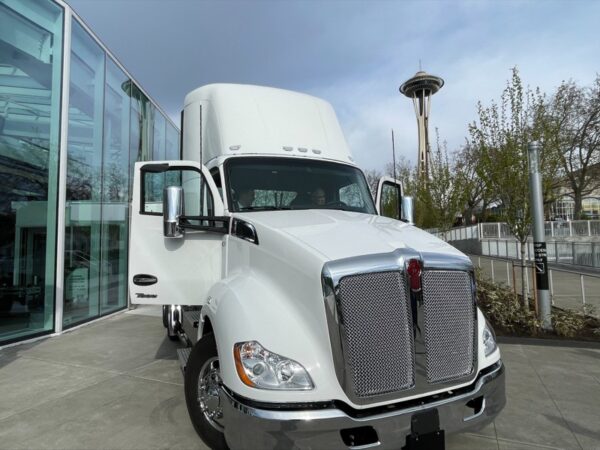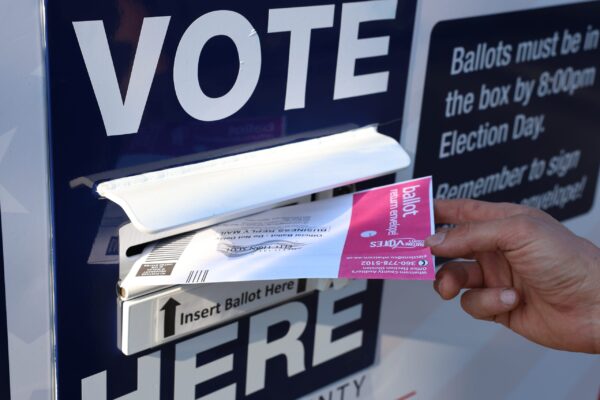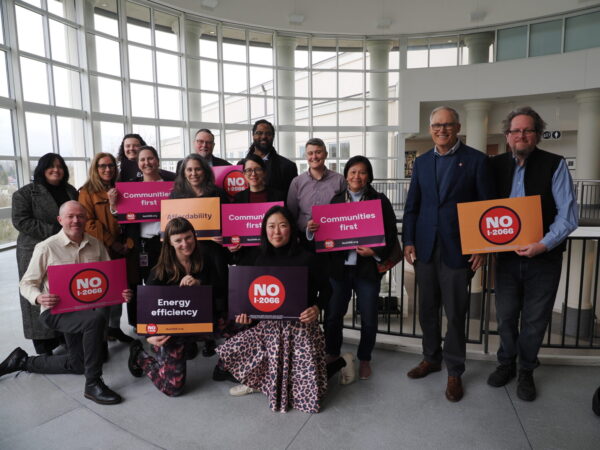Do you know what the biggest culprit is to the unjust and urgent problem of climate change in Washington?
It’s the tailpipe exhaust that spews into the air from passenger cars, vans, light trucks, and SUVs, which make up the light duty vehicle fleet. Their pollution alone makes up 22% of Washington’s total greenhouse gases (GHGs), putting them ahead of the next two largest sources, electric power consumption and manufacturing plants.
Washington has been working hard to curb climate change by demanding that the market offer clean cars for consumers. State governments can require car companies to sell cars that produce less tailpipe pollution. This means we can spend less money on gas and breathe cleaner air – a win-win!
But now, the Trump administration is preparing to deny states like Washington our right to set pollution limits that demand more from carmarkers.
History of Clean Car Laws
So, how did we get here? Let’s take a stroll back to the history of state and federal clean car laws.
As California’s car culture exploded in the 1950’s, smog trapped in the valleys punished the local residents, making the need to curb tailpipe exhaust clear. California’s Motor Vehicle Pollution Control Act of 1959 was the nation’s first law requiring car companies to install pollution control devices in new models. In the late 1960’s when Congress began deliberating the creation of national tailpipe standards, it saw California as a trailblazer for demonstrating what car companies could achieve under stricter standards.
Fast forward to 2005, Washington’s Legislature passed a landmark Clean Car law that requires the new car models sold in Washington to produce fewer tailpipe pollutants each year through 2025. The law matched Washington with California’s tailpipe standards, which were stricter than federal standards.
This important legislation has yielded significant benefits for Washingtonians. The fuel efficiency improvements have already saved Washington drivers nearly $1.5 billion at the pump and are on track to save us from burning over 7.1 billion gallons of gas by 2030. This would avoid an enormous amount of air pollution when you consider that Washingtonians consumed about 2.6 billion gallons of gas in 2015 alone!
How does Washington define clean cars through model year 2025? They include advanced technology gas cars, hydrogen fuel celled cars, hybrid electric cars, and all electric cars. Each of these helps meet Washington’s tailpipe standard based on how clean they are.
Oregon’s Legislature also aligned its state tailpipe standards with California in 2005. This was among the first of many coordinated climate policies by Pacific Coast states.
Today, in addition to Washington and Oregon, 11 other states and the District of Columbia have adopted California’s tailpipe rules. Dubbed Section 177 states, they’re named after the provision in the Clean Air Act that allows states to set their tailpipe pollution rules to match California.
Tailpipe standards under the Obama Era
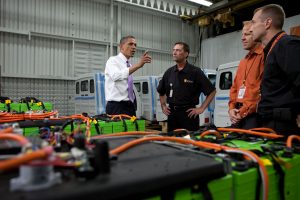
Federal tailpipe standards have traditionally lagged behind California, but, in 2009 President Obama, changed that. Coming off the heels of a 2007 Supreme Court Decision that said EPA can regulate climate pollution from motor vehicles, President Obama decided it was time to establish GHG controls on the tailpipe exhaust of the nation’s on-road vehicles. The administration made the tailpipe rule simpler for industry by merging it with already existing federal vehicle fuel economy laws that Congress had passed to save oil. Car companies would need to make cars that require less fuel to travel the same distance while producing fewer global warming tailpipe pollutants. The benefit for U.S. residents would be fresh air and more savings.
Similar to California, Obama’s clean car standards allowed car companies to meet their performance targets on a class average basis. The class refers to the entire set of vehicles they sell for given a size, like SUVs, sedans, or compact cars. Within each class, some might be zero emission cars that are cleaner than required by the target, while others might be inefficient gas guzzlers that are dirtier than the target. These variations in performance are fine, so long as the target is met on average, across the entire class of vehicles. Each size class of vehicle has its own unique target, with the smaller ones facing stricter targets. This ensures consumers can buy money saving clean cars from every sized model. By the year 2025, the average light duty vehicle in the U.S. is on track to get a real world fuel economy of 36 miles per gallon (mpg). In 2016, the average new car’s fuel economy was at 26 mpg so each new model released between 2016-2025 will improve by about 1 mpg per year. The nationwide savings from lower gasoline expenses will equal $1.7 trillion.
President Obama set the national GHG tailpipe rules for light duty vehicles to mirror California’s for the 2012-2025 model years. Previously, the Bush Administration fought California in Federal Court over whether the state had the authority to set GHG tailpipe standards when the federal government didn’t have any. President Obama’s new national standards squashed this legal debate. Car companies then had the benefit of selling cars nationwide that met one standard for GHG pollutants. The cleanest models that car companies made across every vehicle size would be sold in those Section 177 states that demanded an innovative car marketplace. Progress to cleaner cars was chugging along nationwide.
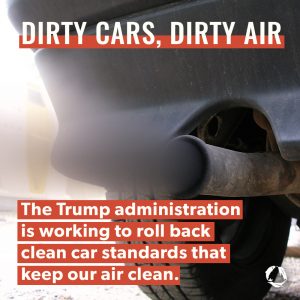 What now?
What now?
Under Trump, the U.S. Department of Transportation (USDOT), which oversees vehicle fuel economy standards, is reportedly planning to freeze the standards in place after 2020. This is in spite of the law requiring USDOT to consider new yearly standards all the way through 2030. Meanwhile, EPA is drafting a rule to drastically roll back the GHG tailpipe standards that mirror California. In justifying this decision, EPA demonstrates a misunderstanding of its own rules, casts aside the evidence that car technologies are improving faster than expected, and ignores health risks to the hearts and lungs of vulnerable populations that suffer from dirty air.
But this fight is far from over. Once the EPA and USDOT each release new draft rules to downgrade the technology prowess of our new cars, they must accept public comments before finalizing them into a new joint standard. This is where We the People (that means us!) will get the chance to weigh in. When the public comment period opens we can build a strong public and legal record for why this rollback must not happen.
A legal battle is also brewing. Washington’s Attorney General Bob Ferguson is part of a coalition of 18 Attorney Generals who have filed suit in Federal Court to block the administration’s rollback. Winning in court will be crucial because the Trump administration’s next step would be to go after California’s laws, which would have ramifications here in Washington.
Trump’s EPA Administrator Scott Pruitt has publicly challenged California’s role as a test bed for clean car technology. He has strongly hinted of his plans to strip California of its right to set stricter standards. This move would surely lead to more legal battles, creating regulatory uncertainty for car companies and potentially prevent more cleaner cars from being made.
In the Evergreen State, we know that clean air should not be taken for granted. By creating standards for industry to make better cars, we can spur the most innovative technology. Modern, efficient, and better driving clean vehicles are ready for the mainstream and Washington’s Clean Car Law will assure them a space in the marketplace. The best way we can save this law and promote even more clean cars is by getting active in shaping the decisions of our government.
Spread the word about the importance of our State and National Clean Car Standards on Facebook, make sure you’re on WEC’s email list to get updates, and contact me if you have any questions!
